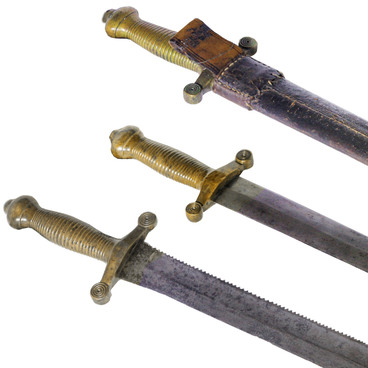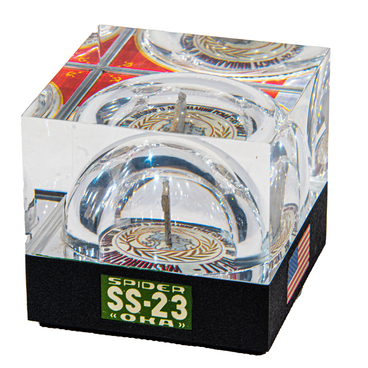Heavy tanks of the KV series (or KV-1) were the most powerful and protected equipment of the Red Army at the beginning of the Great Patriotic War. However, they were almost forgotten in the post-war period. It has a lot to do with the influence of cinematography: during the film-making, the T-34 tanks were most often used, because there were few properly functioning KV tanks after 1945.
There is a mock-up of the 1941 KV-1 heavy tank in the Museum of Military Glory. The tank was named after the People’s Commissar of the USSR Kliment Voroshilov.
The production of this tank started in February 1940 at Kirovsky Plant. It was necessary to increase the production rate, so already on December, 31 of the same year, the first KV has been assembled at the Chelyabinsk Tractor Works. At the same time, the plant began to build a special building for the assembly of tanks. KV tanks were experimentally used in the Finnish campaign for the first time, but after Germany attacked the Soviet Union, they were officially introduced into battle.
The first encounter with the 1941 KV was a surprise for German troops. The tank was virtually impossible to penetrate by German tank guns. To damage the side with a 50-millimeter tank gun, the Germans had to approach it at a distance of 300 meters which was fairly vulnerable. And the tank inclined frontal part could be penetrated only from 40 meters.
Anti-tank artillery was also ineffective: the armor-piercing shell of the 50-mm “Pak 38” anti-tank gun could only hit a KV from a distance of fewer than 500 meters in favorable or good visibility conditions. The fire of 105-millimeter howitzers and 88mm anti-aircraft guns was more effective.
However, this tank was underdeveloped: the new design was too hastily introduced into production. Especially many problems were found with the transmission — power mechanisms. The load-carrying capacity was bad and these mechanisms often failed.
If KV tanks were the most effective in open combat, then many of them even with minor faults were left or destroyed during the retreat. To repair or to evacuate them was impossible. Some damaged KV tanks were taken and restored by the Germans. But the captured tanks were not used for a long time: they often broke down, and Germans didn’t have necessary spare parts.
The military had contradictory views on this tank. It was virtually invulnerable to enemy weapons, but it wasn’t reliable enough in the battle. The cross-country mobility of the tank was also questionable: the KV tank had difficulty overcoming steep slopes, many bridges could not withstand it. In addition, the tank was always placed at the end of the column, because it destroyed any road: wheeled vehicles could no longer use the road after it. However, the KV was indispensable when Soviet troops staged tank ambushes or counterattacked German mechanized columns.
There is a mock-up of the 1941 KV-1 heavy tank in the Museum of Military Glory. The tank was named after the People’s Commissar of the USSR Kliment Voroshilov.
The production of this tank started in February 1940 at Kirovsky Plant. It was necessary to increase the production rate, so already on December, 31 of the same year, the first KV has been assembled at the Chelyabinsk Tractor Works. At the same time, the plant began to build a special building for the assembly of tanks. KV tanks were experimentally used in the Finnish campaign for the first time, but after Germany attacked the Soviet Union, they were officially introduced into battle.
The first encounter with the 1941 KV was a surprise for German troops. The tank was virtually impossible to penetrate by German tank guns. To damage the side with a 50-millimeter tank gun, the Germans had to approach it at a distance of 300 meters which was fairly vulnerable. And the tank inclined frontal part could be penetrated only from 40 meters.
Anti-tank artillery was also ineffective: the armor-piercing shell of the 50-mm “Pak 38” anti-tank gun could only hit a KV from a distance of fewer than 500 meters in favorable or good visibility conditions. The fire of 105-millimeter howitzers and 88mm anti-aircraft guns was more effective.
However, this tank was underdeveloped: the new design was too hastily introduced into production. Especially many problems were found with the transmission — power mechanisms. The load-carrying capacity was bad and these mechanisms often failed.
If KV tanks were the most effective in open combat, then many of them even with minor faults were left or destroyed during the retreat. To repair or to evacuate them was impossible. Some damaged KV tanks were taken and restored by the Germans. But the captured tanks were not used for a long time: they often broke down, and Germans didn’t have necessary spare parts.
The military had contradictory views on this tank. It was virtually invulnerable to enemy weapons, but it wasn’t reliable enough in the battle. The cross-country mobility of the tank was also questionable: the KV tank had difficulty overcoming steep slopes, many bridges could not withstand it. In addition, the tank was always placed at the end of the column, because it destroyed any road: wheeled vehicles could no longer use the road after it. However, the KV was indispensable when Soviet troops staged tank ambushes or counterattacked German mechanized columns.



